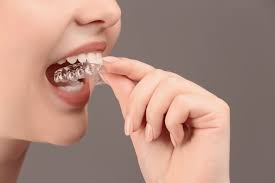Dental appliances are essential tools in modern dentistry, used to treat a variety of oral health issues ranging from misaligned teeth to sleep disorders. Whether fixed or removable, Dental Appliances are designed to support, correct, or protect the structures in your mouth. Understanding their types, uses, and the many benefits they offer is key to making informed decisions about your dental care.
Understanding the Purpose of Dental Appliances:
Dental appliances serve both therapeutic and preventive purposes, helping to manage conditions without invasive procedures. Your dentist may recommend an appliance for issues like bite correction, teeth grinding, snoring, or jaw misalignment. These devices are often custom-made to fit your mouth, ensuring comfort and effectiveness.
Situations where dental appliances are commonly used include:
- Orthodontic alignment and bite correction
- Protection during sports or physical activity
- Prevention of enamel damage from nighttime grinding
- Management of mild to moderate sleep apnea
- Post-braces retention to maintain alignment
Each appliance plays a specific role in preserving or improving oral health while supporting overall well-being.
Types of Dental Appliances You Should Know:
There are several types of dental appliances, each tailored to address a particular dental concern. These can be categorized as either fixed or removable, depending on the treatment plan and personal preference.
Common dental appliances include:
- Braces – Fixed orthodontic devices used to straighten teeth and fix bite issues
- Clear Aligners – Removable transparent trays that gradually move teeth into alignment
- Retainers – Worn after orthodontic treatment to hold teeth in place
- Nightguards – Used to prevent damage from teeth grinding (bruxism) during sleep
- Mouthguards – Protective devices for athletes or those prone to injury
- Palatal Expanders – Orthodontic tools used in children to widen the upper jaw
- Sleep Apnea Devices – Oral appliances that reposition the jaw or tongue to keep airways open
Each type is prescribed based on a thorough dental evaluation and specific treatment goals.
How Dental Appliances Are Customized and Fitted?
The process of receiving a dental appliance involves multiple steps to ensure a perfect fit and maximum comfort. Dentists begin by evaluating your condition and determining the most suitable device. They then take impressions or digital scans of your mouth to create a personalized appliance.
Typical steps in the process include:
- Dental examination and diagnosis
- Taking impressions or 3D scans of the mouth
- Appliance design and fabrication in a dental lab
- Fitting appointment to adjust and fine-tune comfort
- Follow-up visits for monitoring progress or making refinements
Today’s technology allows for highly precise appliances that are both functional and discreet, especially with the use of digital modeling and 3D printing.
Key Benefits of Using Dental Appliances:
Dental appliances can dramatically enhance oral health and quality of life. They provide both immediate relief from symptoms and long-term corrective benefits, especially when used consistently as directed.
Advantages of dental appliances include:
- Improved teeth alignment without the need for surgery
- Reduced tooth damage from grinding or impact
- Better breathing and reduced snoring or sleep apnea symptoms
- Relief from jaw pain and pressure caused by TMJ disorders
- Support for developing jaws in children and teens
- Maintenance of orthodontic results after braces
These benefits not only improve dental function but also support confidence and comfort in everyday life.
Maintenance and Care Tips for Dental Appliances:
Proper care is essential to maintain the effectiveness and hygiene of any Best Dental Appliances. Since these devices are often worn for long periods, daily cleaning and careful handling are crucial to avoid bacterial buildup and damage.
Important care practices include:
- Cleaning the appliance daily with a soft toothbrush and mild soap
- Avoiding hot water that could warp or damage the device
- Keeping the appliance in a ventilated case when not in use
- Bringing the appliance to regular dental checkups
- Replacing the appliance if it shows signs of wear or no longer fits properly
With the right care routine, dental appliances can last for years and continue to deliver consistent results for your oral health needs.





Comments